В работе исследуется практическая применимость формулы коррекции радиальной дисторсии изображений, возникающей при
погружении камеры под воду. Для оценки качества коррекции собран новый датасет подводных изображений шахматной доски с
различными показателями преломления. Показатель преломления регулировался степенью солености воды. Собранный датасет
состоит из 662 изображений, на каждом из которых вручную размечены узловые точки шахматной доски. Для сбора
использовались две различные камеры мобильного телефона: стандартная и широкоугольная. Эксперименты показали, что
формула коррекции радиальной дисторсии позволяет исправлять изображения с высокой точностью, сопоставимой с точностью
классических алгоритмов калибровки. Также в работе показано, что такой способ исправления устойчив к небольшим
неточностям в указании показателя преломления воды.
Ключевые слова:
подводная фотосъемка, радиальная дисторсия, калибровка камеры, показатель преломления
DOI: 10.31857/S0235009220030087
Цитирование для раздела "Список литературы":
Сеньшина Д. Д., Гликин А. А., Полевой Д. В., Кунина И. А., Ершов Е. И., Смагина А. А.
Коррекция радиальной дисторсии при погружении камеры под воду.
Сенсорные системы.
2020.
Т. 34.
№ 3.
С. 254-264. doi: 10.31857/S0235009220030087
Цитирование для раздела "References":
Senshina D. D., Glikin A. A., Polevoy D. V., Kunina I. A., Ershov E. I., Smagina A. A.
Korrektsiya radialnoi distorsii pri pogruzhenii kamery pod vodu
[Radial distortion correction for camera submerged under water].
Sensornye sistemy [Sensory systems].
2020.
V. 34(3).
P. 254-264
(in Russian). doi: 10.31857/S0235009220030087
Список литературы:
- ГОСТ 14254-2015 (IEC 60529:2013). Степени защиты, обеспечиваемые оболочками (Код IP). Межгосударственный совет по стандартизации, метрологии и сертификации, 2015. С. 12.
- Павин А.М. Идентификация подводных объектов произвольной формы на фотоснимках морского дна. Подводные исследования и робототехника. 2011. № 2. С. 26.
- Berman D., Levy D., Avidan S., Treibitz T. Underwater single image color restoration using haze-lines and a new quantitative dataset. 2018. arXiv preprint. arXiv:1811.01343.
- Brown D. C. Decentering distortion of lenses. Photogrammetric Engineering and Remote Sensing. 1966. V. 32. №3. P. 444–462.
- Brunken H., Gühmann C. Deep learning self-calibration from planes. Twelfth International Conference on Machine Vision (ICMV 2019). 2020. V. 11433. P. 114333L. https://doi.org/10.1117/12.922899
- Botelho S., Drews P., Oliveira G.L., da Silva Figueiredo M. Visual odometry and mapping for Underwater Autonomous Vehicles. 6th Latin American Robotics Symposium (LARS 2009). 2009. P. 1–6. https://doi.org/10.1109/LARS.2009.5418320
- Daimon M., Masumura A. Measurement of the refractive index of distilled water from the near-infrared region to the ultraviolet region. Applied optics. 2007. V. 46. №. 18. P. 3811–3820.
- Duan Y., Ling X., Zhang Y., Zhang Z., Liu X., Hu K. A Simple and Efficient Method for Radial Distortion Estimation by Relative Orientation. IEEE Transactions on Geoscience and Remote Sensing. 2017. V. 55. № 12. P. 6840–6848. https://doi.org/10.1109/TGRS.2017.2735188
- Elibol A., Möller B., Garcia R. Perspectives of auto-correcting lens distortions in mosaic-based underwater navigation. IEEE 23rd International Symposium on Computer and Information Sciences. 2008. P. 1–6. https://doi.org/10.1109/ISCIS.2008.4717863
- Ellender B.R., Becker A., Weyl O.L.F., Swartz E.R. Underwater video analysis as a non-destructive alternative to electrofishing for sampling imperilled headwater stream fishes. Aquatic Conservation: Marine and Freshwater Ecosystems. 2011. V. 22. № 1. P. 58–65. https://doi.org/10.1002/aqc.1236
- Heikkila J. Geometric camera calibration using circular control points. IEEE Transactions on Pattern Analysis and Machine Intelligence. 2000. V. 22. № 10. P. 1066–1077.https://doi.org/10.1109/34.879788
- Huang L., Zhao X., Huang X., Liu Y. Underwater camera model and its use in calibration. IEEE International Conference on Information and Automation. 2015. P. 1519–1523. https://doi.org/10.1109/ICInfA.2015.7279526
- Konovalenko I., Sidorchuk D., Zenkin G. Analysis and compensation of geometric distortions, appearing when observing objects under water. Pattern Recognition and Image Analysis. 2018. V. 28. № 3. P. 379–392. https://doi.org/10.1134/s1054661818030112
- Kunina I.A., Gladilin S.A., Nikolaev D.P. Blind radial distortion compensation in a single image using fast Hough transform. Computer optics. 2016. V. 40. P. 395–403. https://doi.org/10.18287/2412-6179-2016-40-3-395-403
- Lavest J.M., Rives G., Lapresté J.T. Underwater camera calibration. European Conference on Computer Vision. Berlin, Heidelberg. Springer, 2000. P. 654–668. https://doi.org/10.1007/3-540-45053-X_42
- Lehtola V.V., Kurkela M., Ronnholm P. Radial Distortion from Epipolar Constraint for Rectilinear Cameras. Journal of medical imaging. 2017. V. 3. № 1. P. 1–18. https://doi.org/10.3390/jimaging3010008
- Lide D.R. CRC Handbook, CRC Handbook of Chemistry and Physics, 85th Edition. CRCPress, 2004.
- Long L., Dongri S. Review of Camera Calibration Algorithms. Advances in Computer Communication and Computational Sciences. 2019. V. 924. P. 723–732. https://doi.org/10.1007/978-981-13-6861-5_61
- Quan X., Fry E.S. Empirical equation for the index of refraction of seawater. Applied Optics. 1995. V. 34. № 18. P. 3477–3480. https://doi.org/10.1364/AO.34.003477
- Sedlazeck A., Koch R. Perspective and non-perspective camera models in underwater imaging–overview and error analysis. Outdoor and large-scale real-world scene analysis. Berlin, Heidelberg. Springer, 2012. P. 212–242. https://doi.org/10.1007/978-3-642-34091-8_10
- Shortis M. Camera Calibration Techniques for Accurate Measurement Underwater. Sensors. 2015. V. 15. №. 12. P. 30810–30826. https://doi.org/10.3390/s151229831
- Skarlatos D., Agrafiotis P. Image-Based Underwater 3D Reconstruction for Cultural Heritage: From Image Collection to 3D. Critical Steps and Considerations. Visual Computing for Cultural Heritage. Springer Series on Cultural Computing. Cham. Springer, 2020. P. 141–158.
- Somerton D.A., Glendhill C.T. Report of the National Marine Fisheries Service Workshop on Underwater Video Analysis. U.S. Dep. Commerce, NOAA Tech. Memo. NMFS-F/SPO-68, 2005. 69 p.
- Xue Z., Xue N., Xia G., Shen W. Learning to calibrate straight lines for fisheye image rectification. Proceedings of the IEEE Conference on Computer Vision and Pattern Recognition. 2019. P. 1643–1651. https://doi.org/10.1109/CVPR.2019.00174
- Yau T., Gong M., Yang Y. Underwater Camera Calibration Using Wavelength Triangulation. IEEE Conference on Computer Vision and Pattern Recognition. 2013. P. 2499–2506. https://doi.org/10.1109/CVPR.2013.323
- Zhang Y., Zhou F., Deng P. Camera calibration approach based on adaptive active target. Fourth International Conference on Machine Vision (ICMV 2011). 2012. V. 8350, 83501G. https://doi.org/10.1117/12.922899
- Zhang Z. A flexible new technique for camera calibration. IEEE Transactions on pattern analysis and machine intelligence. 2000. V. 22. P. 1330–1334. https://doi.org/10.1109/34.888718
